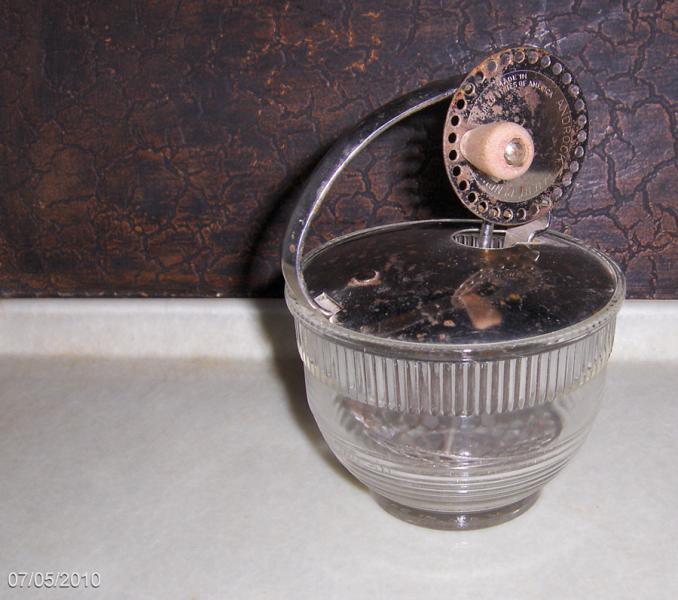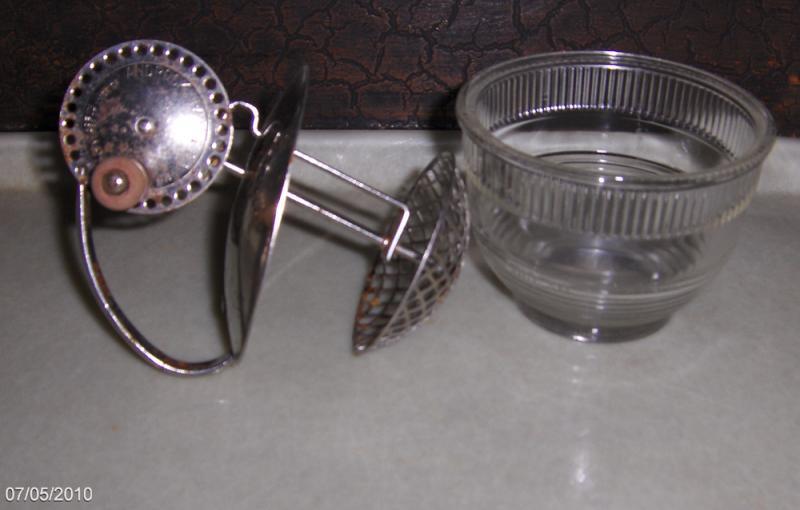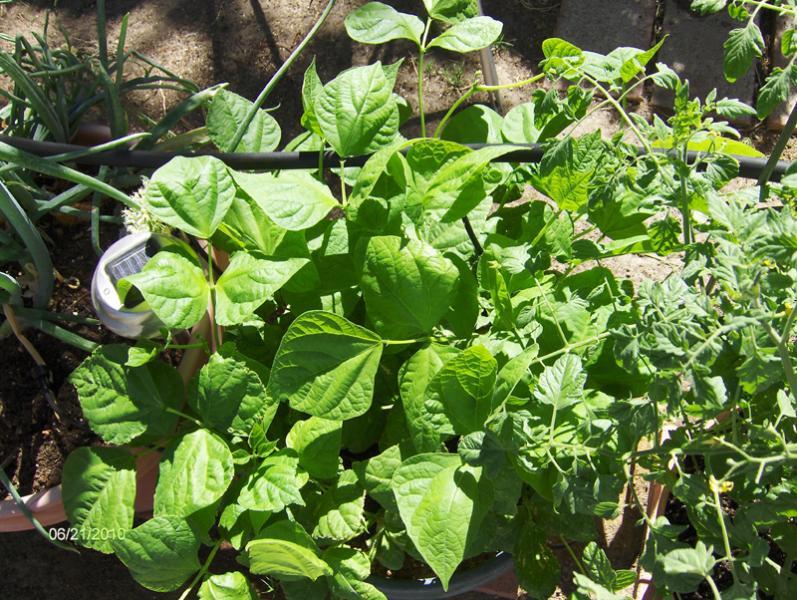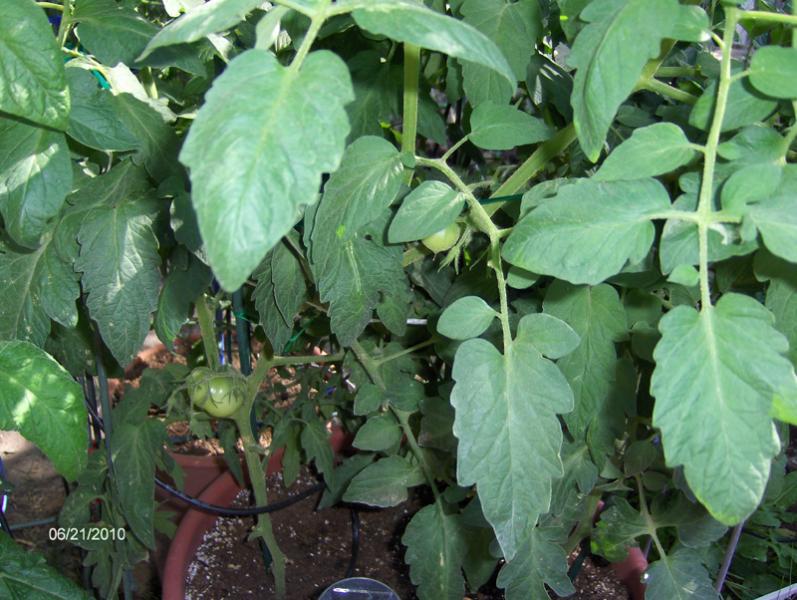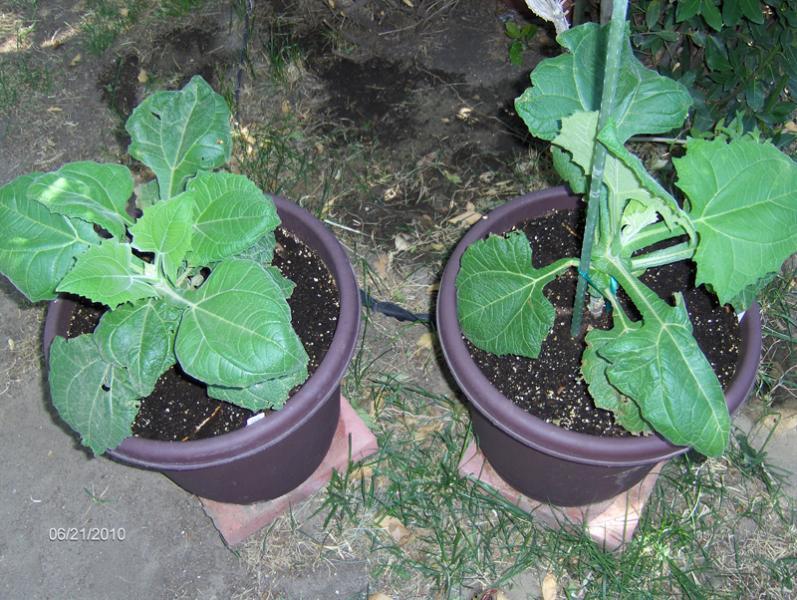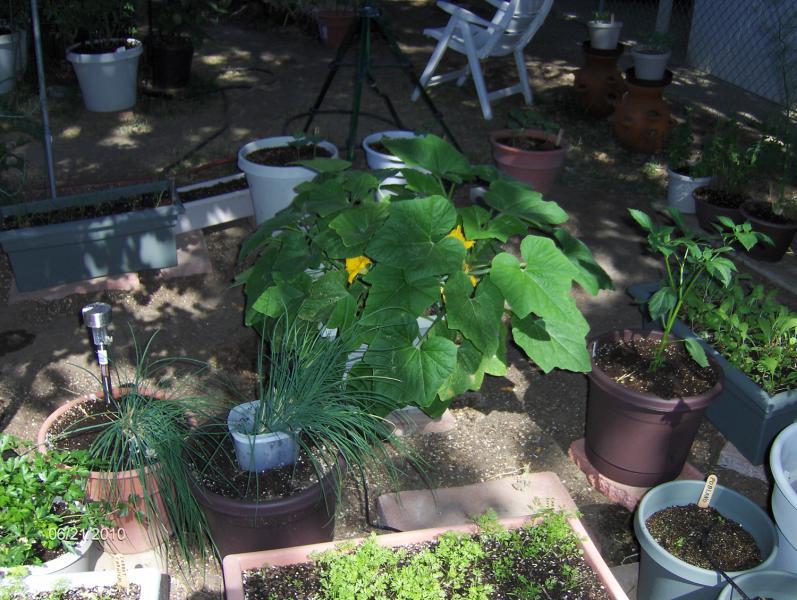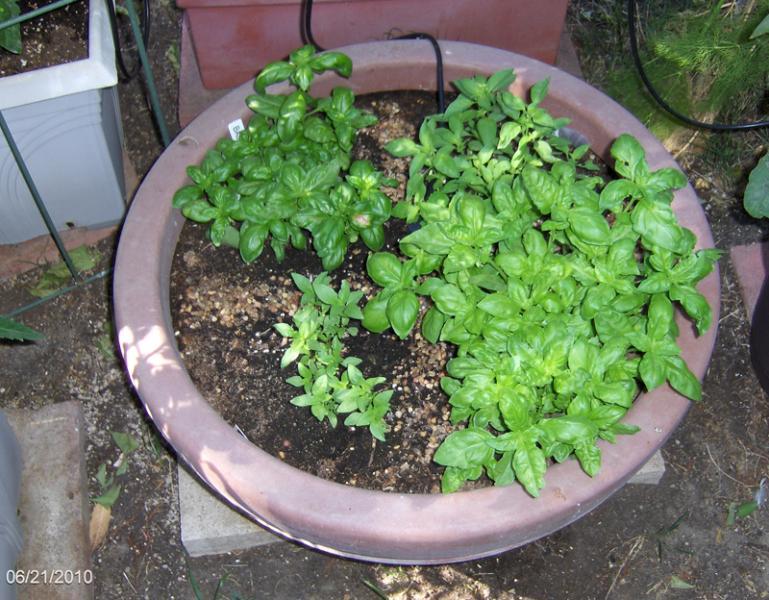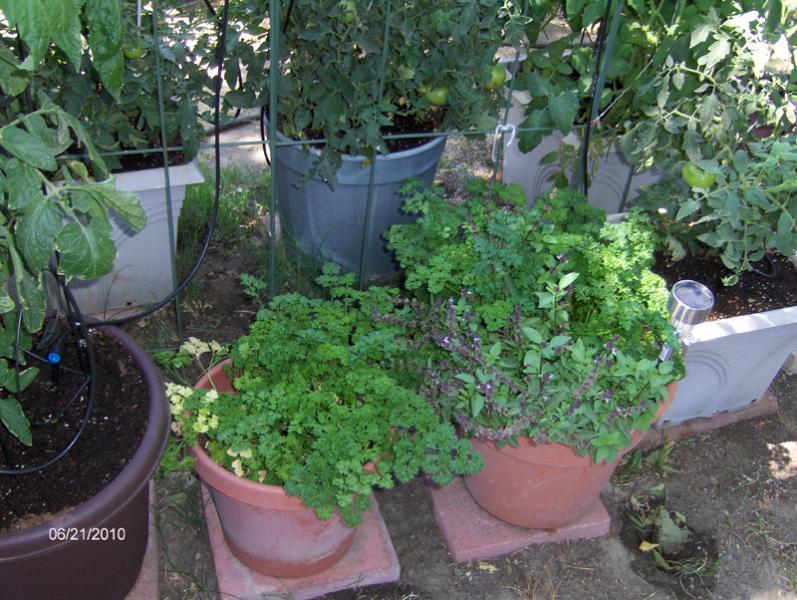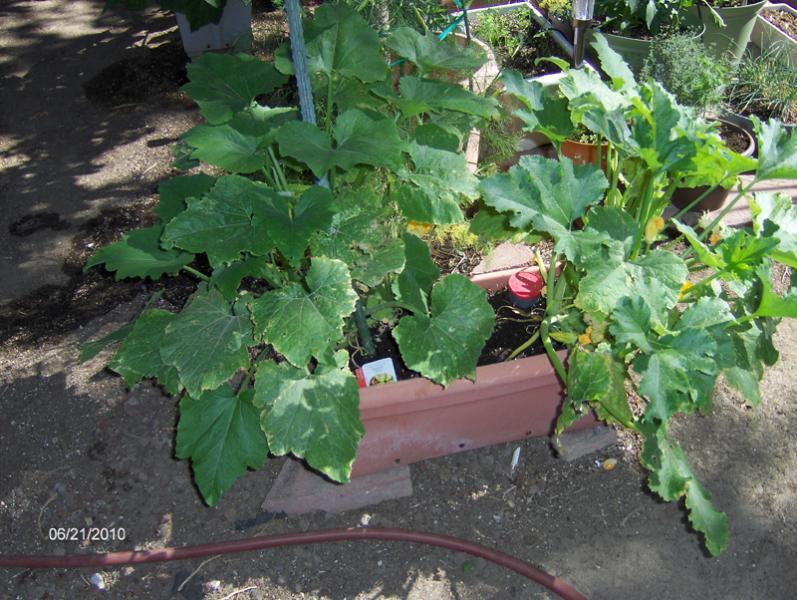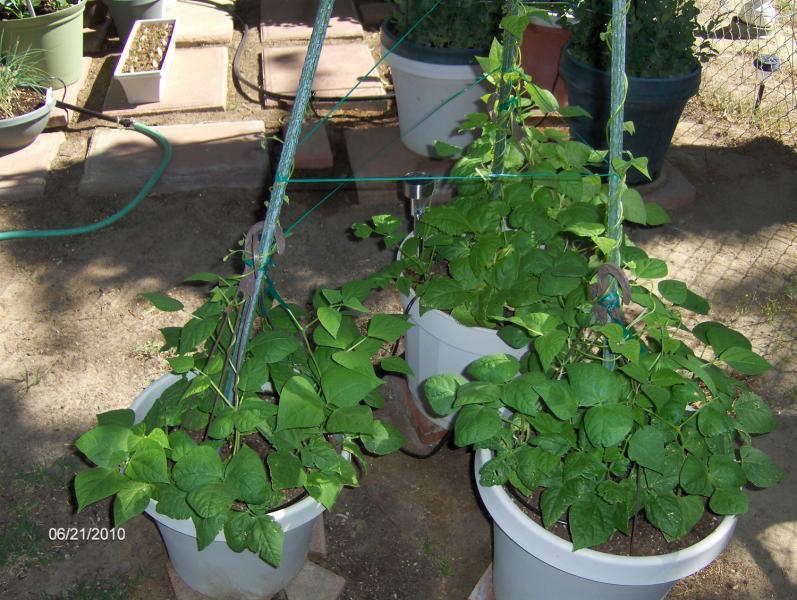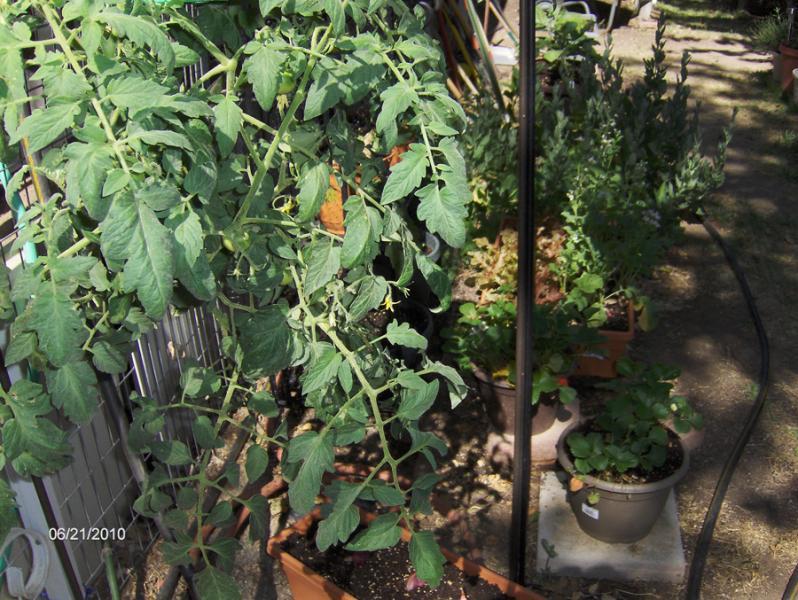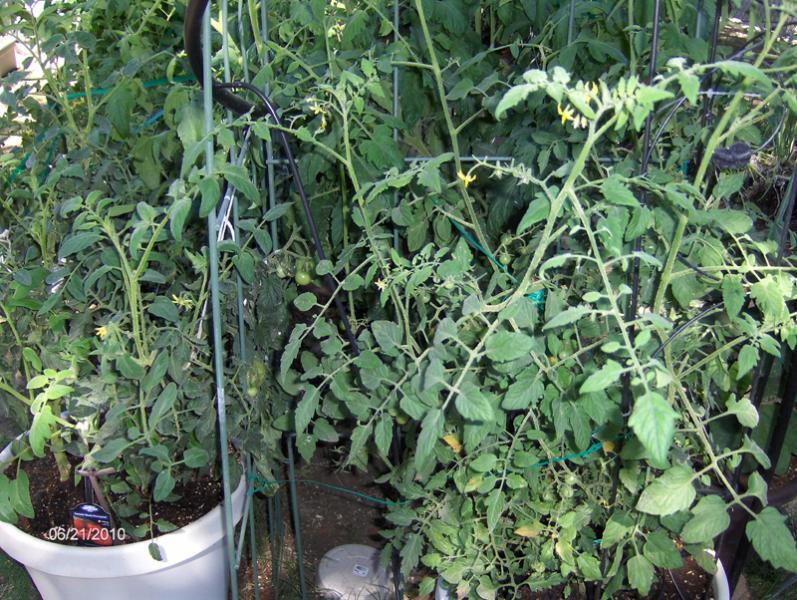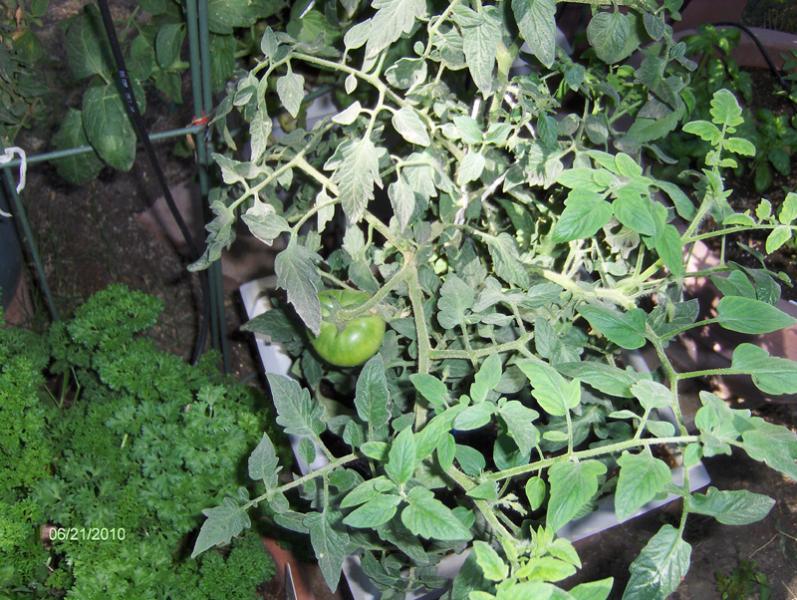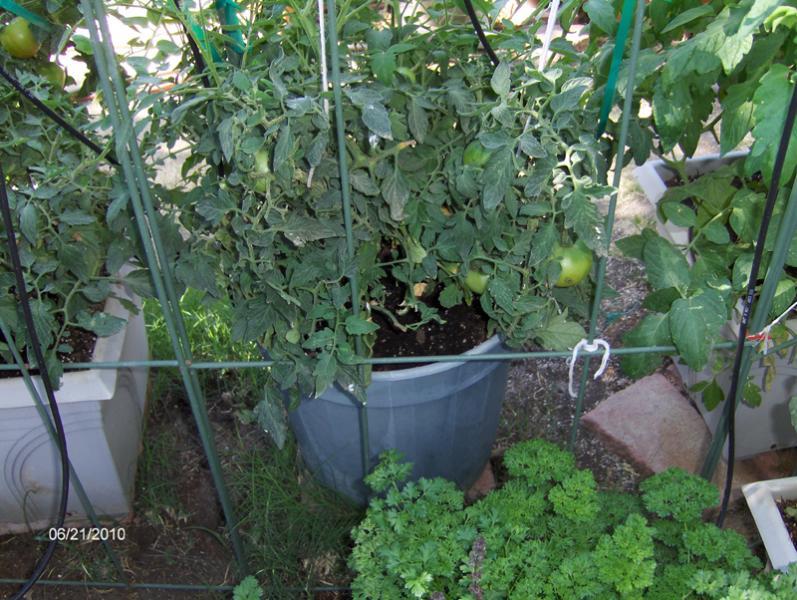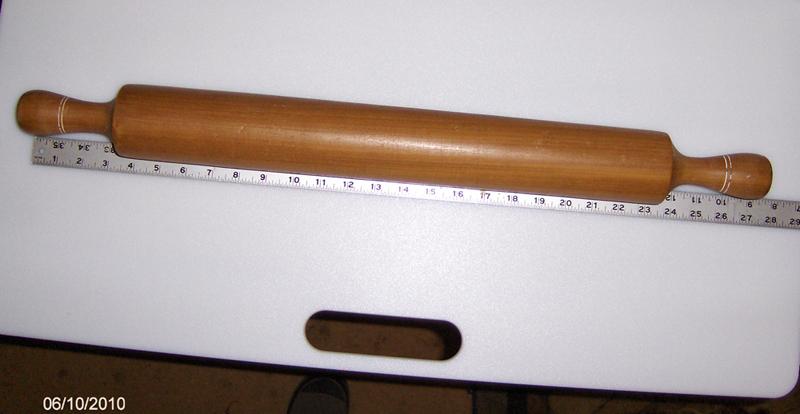-
Posts
11,033 -
Joined
-
Last visited
Content Type
Profiles
Forums
Store
Help Articles
Everything posted by andiesenji
-

Yard Sale, Thrift Store, Junk Heap Shopping (Part 1)
andiesenji replied to a topic in Kitchen Consumer
Kerry, that is a super nifty item. I was out early this morning to visit a multi-family yard sale down the street and found this little beauty. She was asking $5. I got it for a basket of tomatoes from my garden. A pretty good deal. For both of us! How cute is that! It will hold two eggs at the most. It needs a bit of TLC and the top requires re-chroming but it does work. The manufacturer is Androck and it states, "Made in the United States of America." I think I may have one similar to this somewhere in my collection of eggbeaters but I haven't seen it for years - it's probably packed away in one of the footlockers in my storage building. I really should go through some of those and sell off the duplicates. Not anytime soon, the summer temps are too warm to spend much time out there. -
I've often prepared stir-frys for a person who can't stand celery and also doesn't like water chestnuts. I substitute asparagus and/or green beans, often half and half - blanched and cut on the diagonal.
-

Infusions, Extractions & Tinctures at Home: The Topic (Part 1)
andiesenji replied to a topic in Spirits & Cocktails
The steam extractor itself doesn't really cook the juice - the other process does. I've got a couple of electric juicers - the Breville JEXL that does an excellent job and is completely self-contained. I also have a 20-year-old commercial Champion juicer that will juice just about anything but is noisy and not easy to clean. If I am going to do a lot of heavy-duty juicing I will haul out the old Champion, insert my earplugs and work my way through crates of fruit. For berries with seeds, I much prefer the steam extractor, no need to strain the juice. I have one of the long-handled juice presses but it takes more strength than I can muster and hurts my arthritic hands. -

Infusions, Extractions & Tinctures at Home: The Topic (Part 1)
andiesenji replied to a topic in Spirits & Cocktails
For hard to juice things "like pineapple and strawberries" also kiwi fruits and the heavily seeded concord grapes and wild blackberries (from a friend who lives in Tehachapi and has to contend with bears who also love blackberries) I use a steam juice extractor. Similar to this one. If I only have a small batch of fruit that isn't enough volume for the steam extractor, I use an electric streamer - the kind with the basket that sits well above the water. You can also do this with a stove top steamer. For each cup of fruit I put 1 1/2 cups of water in the bottom and 4 cups of fruit is just about the maximum for one batch. (This also works with dried fruit.) I turn the steamer on and set a timer for 45 minutes. I check the liquid in the bottom and taste it to see how concentrated it is. If it needs more time I steam it for another 30 minutes and taste again and repeat if necessary. When the liquid has reached a good concentration, I transfer it to a jar with the steamed fruit and allow it to "steep" for about 24 hours, then strain it and add whatever sweetener I want and will cook it down on the stovetop to further concentrate it, tasting all the way. You can find unsulphured dried fruits, which often are not as pretty as the treated ones. I've been drying my own fruits and etc., for many years and have two of the large Excalibur dehydrators. They do have a heat element but it is not usually necessary to turn the heat up very high - I rarely set it higher than 105 degrees and air drying in my area of the desert can mean much higher temps. There are many brands of dehydrators, some are junk, some are more expensive. I have only had good results with the Excaliburs but I have friends who have and love the L'Equip dehydrators and have two, one is the newest model and they bought several extra trays for both. They grow pears commercially here in the Antelope Valley and sell dried pears at their farmstand. Both brands on this page. -

Infusions, Extractions & Tinctures at Home: The Topic (Part 1)
andiesenji replied to a topic in Spirits & Cocktails
If I might add a note about getting a more intense flavor from fruit infusions. Dried fruits have a much more concentrated flavor and sweetness and are ideal for infusing in alcohol. Earlier in this topic someone mentioned apples and these fruits in particular will produce a much stronger flavor than fresh apples. Once dried, the fruits do not need refrigeration and this is a huge advantage and allows you to work at your pace instead of at the demands of the ripe fruit. I have mentioned many times that I grew up on a farm where every type of fruit (and vegetable) was canned or dried. There were no electric dehydrators at that time but there were sheds with fairly flat, galvanized roofs (shiny and very hot in the sun) which were covered with muslin and then the fruit and that protected by wood frames on which "gauze" curtain material had been stretched. After they were dried, the peaches were carefully sorted and any that had a blemish went into a big crock (15 gallon) with sugar and boiling water and eventually became peach "brandy" for use in the holiday fruitcakes, steamed puddings and etc. The aroma when the cover was lifted to stir the stuff was a heady essence of pure peach. Same with apples. While some cider was made from the windfalls at harvest, that never lasted through the winter and one or more batches made with dried apples would be produced and some of the more aromatic dried apples were infused in brandy - something of which my grandfather was very fond. If you don't have the inclination (or resources) to dry you own fruit, excellent varieties are widely available. If you are near a Trader Joe's, check out their dried fruits. -
The green "snap" or "string" beans commonly grown in the US and Canada, both bush and pole, as well as the classic haricots vert and which are picked while immature (green) can be eaten raw with no ill effects. Cornell University conducted extensive tests many years ago and has published numerous papers on the subject. There are stories about these beans containing a "poison" and most of the stories seem to be coming out of Germany. One person insisted that green beans have to be boiled until soft to "inactivate" the poison. There are certain types of beans that should not be eaten raw, such as lima beans as well as the ones common in Europe and around the Mediterranean sea. These are all of the "broad" type beans, fava beans, and related species. I have eaten lots of raw string beans during my lifetime. I ate some this morning (Kentucky Wonder pole beans) while "grazing" in my garden. I did the same thing when I was a little child. If they were poisonous, I would be posting from beyond the grave!
-
The best way to taste compounds of this type is to use a drop at a time mixed into heavy cream which has been just slightly sweetened. The casein in the cream will pick up and distribute the volatile compounds so you can actually taste it. I have used this method with the Loran oils and similar flavorings and with Orange flower water and rosewater which can vary in intensity from brand to brand.
-
I have yards of the fine voile but don't use it for straining foods. I prefer natural fibers. I use the voile for covers over my lettuce and greens "beds" to keep the critters away. I ladle the yogurt (I make half a gallon in each batch) into the muslin-lined basket of the spinner, gather the corners and sides to make a closed bag. Or I use a large jelly bag with a drawstring but both are tied at the top. I do allow some of the whey to drain into a bowl on its own - perhaps for an hour or so. Then put the basket into the spinner and pump it about ten times. A lot of whey is expressed in this first session and has to be poured off immediately. Keeping the "bag" intact, I spread the yogurt about to distribute it more or less evenly and repeat the process. Depending on how firm the yogurt is to begin with, ordinarily I get good results with three spinning sessions. Occasionally, if it hasn't set quite as much as usual, I need to add one or two sessions. As I said, it takes a bit of effort but saves a lot of time overall. I have tried going further with the process to get a really dry end result, similar to hoop cheese or "farmers" cheese which is perfect for cheesecakes. I make my own yogurt and use the cultures from New England Cheesemaking supply both the Bulgarian and the "Tangy" with never a single failure. The Bulgarian can be recultured four or five times - I include the whey - but I use it within a week. The yogurt itself keeps very well and I have maintained it in the fridge for more than three weeks.
-
I posted in another thread about yogurt cheese that when I need dense yogurt cheese for this kind of project (or for cheesecakes) I use muslin, a jelly bag or butter muslin cheesecloth in a salad spinner - I purchased the small OXO one mostly for this purpose. This process extracts a lot of whey in a short amount of time (with some effort) and produces a dense cheese that holds together nicely. You can check the results every few minutes and pour off the whey (save it for use in baking) until you have the exact texture you want. Then chill it for an hour and proceed with forming it into balls.
-
20 gms is a lot of lavender. I use 5 gms in a lemon/lavender scone recipe and that is certainly sufficient. Any more and you get a soapy flavor. As noted above, less is more, or more than enough. Dried lavender flowers weigh much less than the fresh. When I have dried my own (French and Spanish lavender) the dried weight is a tenth of the fresh weight. This site has a recipe that indicates one teaspoon of the dried lavender. That is about the amount that I have used to good effect.
-
This site has detailed instructions and results Mine were very tasty, I stored them in a tub of clean sand in the shed and they kept well into March. (Harvested in early November when the leaves looked mostly dead. I like the flavor. When I still was working the big garden, I also grew artichokes and cardoons - the latter were constantly self-seeding and I had lots of baby cardoons popping up all over the property.
-
Sharp comment, KA! I forgot to mention that I have had great success with growing sunchokes in the same size containers with great tuber production. I haven't grown them in three or four years but the last year I did, I got 8 pounds of 'chokes from one pot.
-
The Yacon plants are in fairly large and deep pots. They just look smaller because of the way I took the photo. Besides the fertilizer already in the potting soil (Miracle Grow Moisture Control) I am using foliar feeding, which has given me great results in the past with gardening in containers.
-
For whoever emailed me about the Yacon plant (had problems with my email this morning, after reading a couple of messages lost everything and had to restore from the 6:15 p.m. yesterday Time Machine backup) Here is the information from Nichols Garden Nursery from whom I ordered the plants (4). Yacon Plant info. I'm anxious to see how they do in the heat of the desert summer here. So far they have done okay with the high winds we have had but I do have then in a protected area, screened by the bay laurel bushes and they are in open shade during the middle of the day.
-
I use baking parchment and simply slide the entire paper with cookies attached onto the cooling racks. I reload the oven with cookie dough that has been positioned on additional sheets of parchment which are easy to slide onto a sheet pan. By that time the cookies have just cooled enough that they can be removed from the parchment but for very thin and crisp (or "lace" cookies) I leave them on the parchment until they have cooled and usually pop free easily.
-
Here are some photos taken earlier this morning: the bush beans are blooming but their blossoms are hidden under the big leaves. This pair of Celebrity tomato plants has set more than twenty fruits. These Yacon plants are new to me this year and there won't be a harvest for months but they are interesting. Both my crookneck squash and zucchini are doing well and I have picked enough for two meals. all my herbs are growing with great enthusiasm. The tri-color pole beans were planted later than the bush beans but they are now taking off. After a slow start this Early Girl in the TopsyTurvy planter has accelerated its growth and has set a bunch of small fruits. And here is the tomato "jungle"
-
My local Mexican supermarket had a special this past week on mangoes (5 for a dollar) so I bought some and last evening made mango lassi for myself and a visiting neighbor. This week they have Haas avocados (5 for a dollar) and yesterday I bought five. This morning I made a mango/avocado lassi with homemade yogurt. I divided the batch and made half sweet (with agave syrup and lemon) and half salty (with cumin and lemon juice). Had a large glass of the sweet for breakfast and will have the salty for lunch. The Indian people have contributed an enormous amount to the cuisine of the world but I think the lassi is one of the greatest.
-
I routinely prepare several different soups in my Vita-Mix and I really have no recipe for many of them because I use what I have available. My recipe for Carrot/Sorrel soup can be made entirely in the Vita-Mix or similar blender or cooked on the stove and finished in a blender. This site has some basic simple blender soup basics and some specific recipes that you can use as a guide. There are numerous sites with smoothie recipes and several cookbooks that have recipes that range from the sublime to the ridiculous (in my opinion).
-
What you probably have is a classic Kugelhopf cast iron pan as these have been around for centuries. The "Bundt" pan as known in the US has only been around since it was invented in 1950. The origin of the name is from bundkuchen which is one of the Kugelhopf Cake types which developed in Alsace and which were more sweet bread-like than cake-like. Your pan is really a treasure and is quite rare because so many were lost during the scrap metal drives especially during WWI and later in WWII. Patriotic housewives gave up many treasures of this type to help in the war effort.
-
I would like to see them bring back Curtis Aikens, John Ash and the Two Hot Tamales. I really enjoyed those shows back in the day. Good Eats is okay, but I rarely watch the Food TV channel. I do watch the shows that are on one of my local PBS stations every Saturday afternoon. I have the complete set of The French Chef on DVDs plus several of the "Julia &" whoever segments that have slowly become available on VHS and more recently on DVDs. I have a VHS of Julia and Graham Kerr that is hilarious.
-
Something I prepare fairly often. Half inch of water in a non-stick skillet. Thick sliced onions (large) cooked until just beginning to become translucent around the edges, then each round topped with a whole chicken liver. Add a little more boiling water if needed, cover and cook till the liver is done. I don't use salt or pepper because I like the blend of flavors as they are. The result can be placed on bread or toast but I usually don't bother.
-
For "really old" country-style cooking, think LARD, and more lard. Southern fried chicken just doesn't taste the same when fried in any other fat! I love that cookbook too. I'm sure you will have great success with the rolling pin. I have several that are close to or over the century mark and they are much heavier than newer ones - the wood itself is denser. This one is very long, made of red oak and weighs nearly 8 pounds. The weight helps in rolling denser doughs, I use it for puff pastry and especially for croissants. It was made in the 1920s.
-
ABE books has it for considerably less: see it here.
-
This Sharp is deeper but not as wide as the one you had. I have had the larger model for many years and it has worked nicely in both convection and microwave and combination phases.
-
Wendy Sweetser has authored a book "Cooking with Chimineas: 150 Delicious Recipes for Barbecuing, Grilling, Roasting and Smoking" that may still be available but I wouldn't recommend it. There is this blog: http://www.squidoo.com/cooking-with-a-chiminea however, both these suggest cooking with charcoal briquettes and I don't think they are recommended for use in a chiminea. I have one (been stored in the shed for years) but it is the traditional clay, purchased on one of my trips to New Mexico years ago and used the first year but not since then. I have a perfectly adequate charcoal grill/smoker/barbecue that is much easier to use and much easier to clean. I did use natural charcoal in the chiminea as I use it exclusively in my barbecue - I don't like the briquettes at all. In my opinion you should just enjoy it as an outdoor firepit as you would a fireplace indoors and not try the cooking part. My neighbor, who is visiting and looking over my shoulder, suggested a pot for mulled wine and some "nibbles on skewers" but that is her thing, not mine, as I don't drink alcohol.


